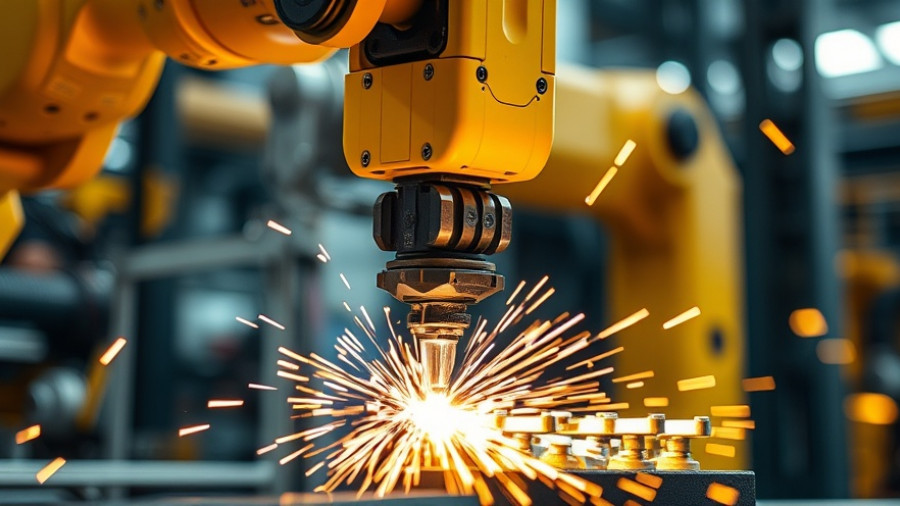
The Evolution of Automation in Metalworking
In the realm of metalworking, innovations in automation technology are revolutionizing traditional processes. The challenges of batch size one—a production model that focuses on single items rather than mass production—are being effectively tackled by robotic automation systems. As highlighted by HGG Profiling Equipment's integration of Stäubli robots, the innovative RoboRail concept is transforming the way complex shapes and profiles are processed, enhancing precision and productivity in environments where time and accuracy are paramount.
Batch Size One: A New Standard in Metal Fabrication
Metalworking has traditionally relied on labor-intensive methods that are becoming less viable as industry needs evolve. The shift towards batch size one production means that machines and systems need to accommodate an immense variety of shapes and cuts made from heavy-duty materials like steel. The operational efficiency gained from robotic plasma cutting, as demonstrated by HGG, allows manufacturers to produce complex steel profiles with intricate cuts and holes, thus reducing reliance on manual methods and contributing to higher output levels.
The Heartbeat of Precision: Synchronizing Robots and Controllers
Synchronization between machines is crucial in applications where multiple axes must work harmoniously. HGG’s implementation of Stäubli’s uniVAL drive interface demonstrates an innovative approach to achieving this synchronization. By generating a pulse from the main system that acts as a 'heartbeat', precision in the cutting process is maintained, accommodating the high tolerances required in batch size one operations. This integration minimizes error rates that could spiral operational costs, illustrating the merit of well-coordinated robotic systems in modern manufacturing.
Benefits of Robotic Automation in Metalworking
Robotic plasma cutting systems are redefining production capabilities across several industries. The precision of robotic arms, combined with high-temperature plasma torches, facilitates incredibly clean cuts, which is invaluable in high-stakes industries such as aerospace and automotive manufacturing. Enhanced productivity is achieved as these systems can operate continuously, significantly reducing turnarounds without compromising quality.
Future of Robotic Cutting Technologies
With a growing emphasis on speed and efficiency, the future of robotic plasma cutting looks bright. As more companies recognize the financial benefits and operational improvements yielded by this technology, it’s likely we will see broader adoption. Enhanced integration with Industry 4.0 practices, including IoT and AI-driven analytics, will further optimize cutting processes and facilitate predictive maintenance. Additionally, sustainability initiatives will push for technology that reduces waste, making this approach not just innovative but environmentally conscious.
 Add Row
Add Row  Add
Add 




Write A Comment